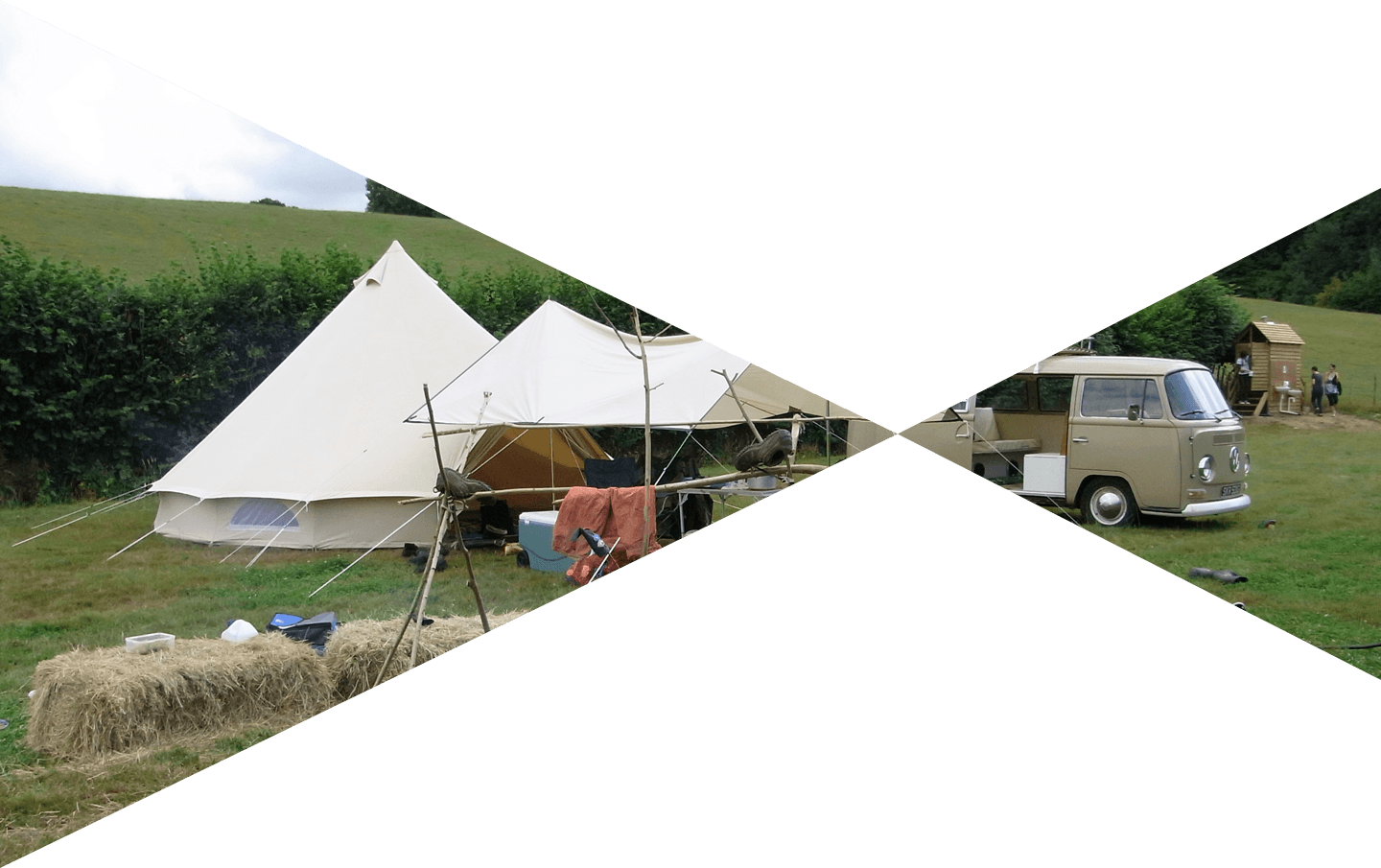Goudhurst Village
Goudhurst, situated in the Weald of Kent, is 10 miles from Tunbridge Wells. It sits prettily at the top of a steep hill with commanding views of rolling hills and fields, punctuated by church steeples, oast houses and areas of woodland. It is part of ‘The Weald’ – an area which was once a vast forest stretching from Hampshire to Kent. The area has retained its rural charm through the centuries.
Some of the camping fields at ‘Bedgebury Camping’ are situated in old hop gardens, and the small brick huts (where hop pickers would stay during the hopping season) are now used by campers as washing up rooms and storage facilities. It seems that although hop farming ceased on this farm nearly 20 years ago, a closer inspection of some of the hedgerows around the campsite during August will reveal that a number of hop bines – with their pretty green and aromatic cones have been left behind.
Orchard fruits flourish in the fertile soils and temperate climate of this corner of England. It is a common site during the late summer and autumn to see large wooden bulk bins arrive in the apple, pear and plum orchards to be carefully filled with fruit picked off the trees. It is no wonder that Kent is nicknamed the ‘Garden of England’ and in recognition of its fruit growing heritage, Bedgebury Camping has named all of its camping fields after English fruits.
Today, Goudhurst is a village which can offer visitors places to eat and drink and shops to buy groceries or gifts. The surrounding countryside is ideal for walkers with a number of relatively easy walks of up to 10 miles, taking in the rolling landscape and country lanes.
Goudhurst History
The place name of Goudhurst is derived from the Old English guo hyrst, meaning Battle Hill, or the wooded hill on which a battle has been fought. The name commemorates a battle fought on this high ground in Saxon times.
During the 12th and 13th centuries Goudhurst grew as a farming village. In the mid-14th Century Flemish weavers arrived in the village and its surrounding areas. The weavers also brought with them a preference for hopped beer and their knowledge of hop growing which led to the birth of a new industry in the area – hop farming. Evidence of this industry can still be seen today along country lanes around Goudhurst and surrounding villages with hop gardens – comprising long poles and overhead strings for the ‘hop bines’ to grow along, as well as the unusually shaped ‘oast houses’ used for drying the hops with their tall, sometimes conical roofs topped with a white vent.
In 1747 villagers fought and won a local battle with the notorious Hawkhurst Gang, a criminal organization involved in smuggling throughout southeast England from 1735 until 1749.
Smuggling had generally been supported by the local population, providing employment and much need wages, however the murderous brutality of the Hawkhurst Gang had gone a step too far.
"General" George Sturt, a former army corporal formed the Goudhurst Militia to put an end to the smugglers' grip over the local economy. Enraged by this defiance Thomas Kingsmill, a native of the town, threatened to burn the town and kill the residents. On the 21st of April 1747 the gang attacked, the militia were well prepared and the first volley of fire around the church led to the death of Kingsmill's brother George. Two more smugglers died before the gang finally withdrew. The gang were later all rounded up and hanged.

